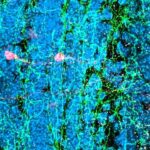Link to Pubmed [PMID] – 38724567
Link to DOI – 10.1038/s41380-024-02580-y
Mol Psychiatry 2024 May; ():
Amygdala functional dysconnectivity lies at the heart of the pathophysiology of bipolar disorder (BD). Recent preclinical studies suggest that the amygdala is a heterogeneous group of nuclei, whose specific connectivity could drive positive or negative emotional valence. We investigated functional connectivity (FC) changes within these circuits emerging from each amygdala’s subdivision in 127 patients with BD in different mood states and 131 healthy controls (HC), who underwent resting-state functional MRI. FC was evaluated between lateral and medial nuclei of amygdalae, and key subcortical regions of the emotion processing network: anterior and posterior parts of the hippocampus, and core and shell parts of the nucleus accumbens. FC was compared across groups, and subgroups of patients depending on their mood states, using linear mixed models. We also tested correlations between FC and depression (MADRS) and mania (YMRS) scores. We found no difference between the whole sample of BD patients vs. HC but a significant correlation between MADRS and right lateral amygdala /right anterior hippocampus, right lateral amygdala/right posterior hippocampus and right lateral amygdala/left anterior hippocampus FC (r = -0.44, r = -0.32, r = -0.27, respectively, all pFDR<0.05). Subgroup analysis revealed decreased right lateral amygdala/right anterior hippocampus and right lateral amygdala/right posterior hippocampus FC in depressed vs. non-depressed patients and increased left medial amygdala/shell part of the left nucleus accumbens FC in manic vs non-manic patients. These results demonstrate that acute mood states in BD concur with FC changes in individual nuclei of the amygdala implicated in distinct emotional valence processing. Overall, our data highlight the importance to consider the amygdala subnuclei separately when studying its FC patterns including patients in distinct homogeneous mood states.


